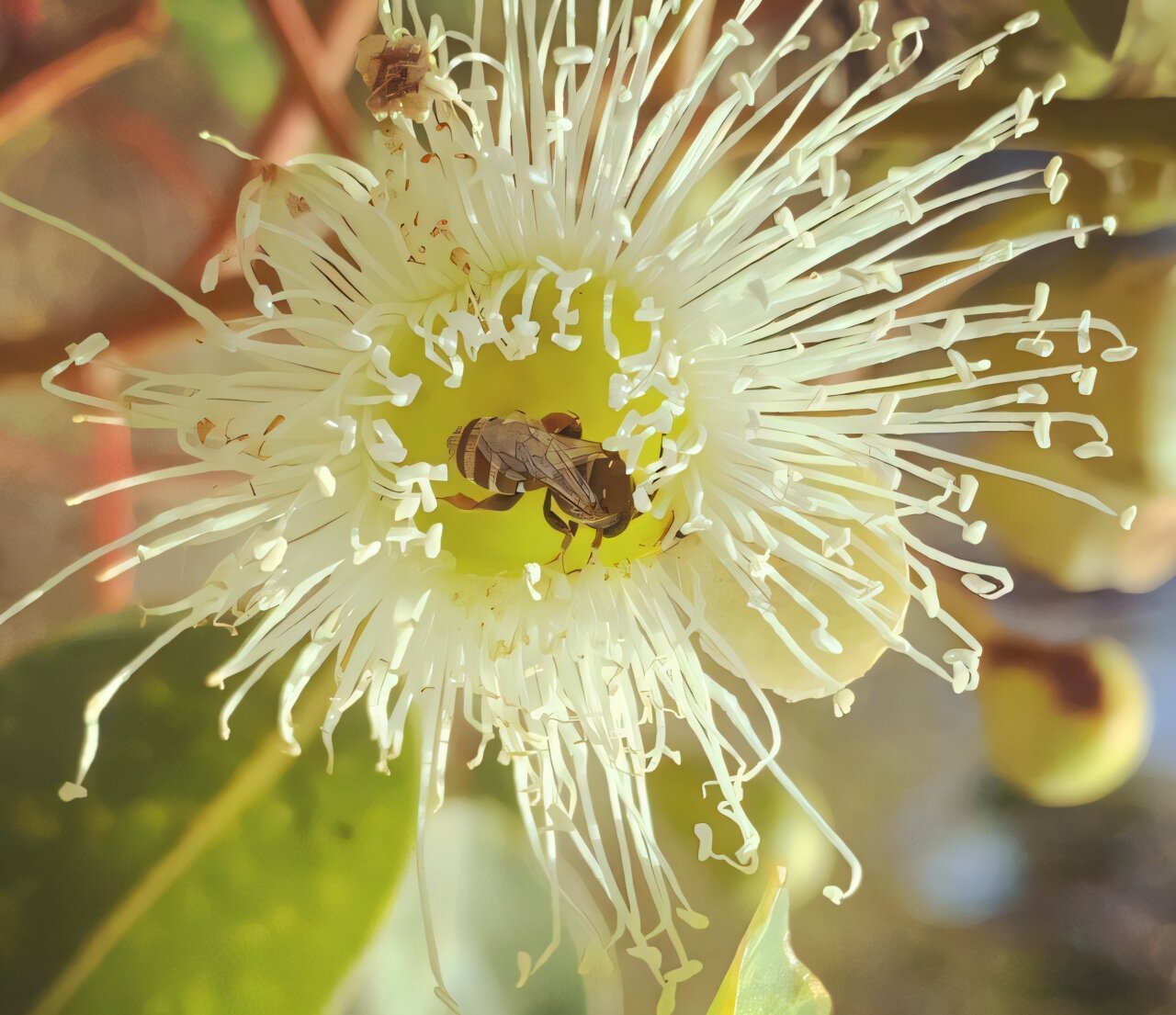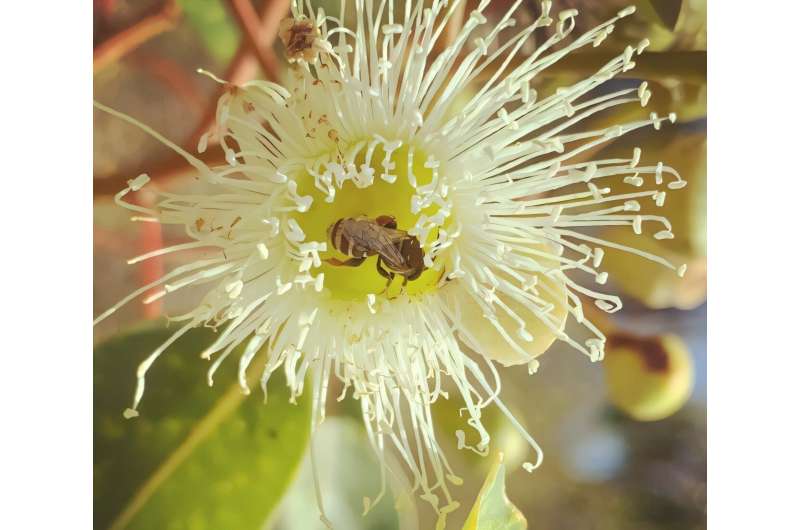

New Curtin University-led research has revealed that Marri trees are critical to the survival of more than 80 species of native bee in Western Australia’s South West region, which is one of the world’s most biologically rich but threatened biodiversity hotspots.
Lead author Dr. Kit Prendergast, Adjunct Research Fellow from the Curtin School of Molecular and Life Sciences, said the study identified the Marri (Corymbia calophylla), which is native to the South West and was named a “near threatened” species in 2019, as a crucial supplier of food for native bees and supporter of the region’s ecosystem.
“The findings that these trees support at least 81 different species of foraging bee in the South West highlight their extraordinary role in the survival of native bee populations, particularly during late summer when most other plants have stopped flowering,” Dr. Prendergast said. “Native bees in WA’s South West are plentiful and incredibly diverse, and many depend heavily on native plants like the Marri for food.
“Marri trees provide vital nectar and pollen, especially at a time when few other plants are in bloom. For many bee species, Marri is often the only food source available at this time of year. Furthermore, this tree not only provides food sources for native bees, but also nesting resources, with species observed nesting in small holes and among the roots, and its copious iconic red sap is used by Megachilidae bees to seal off their nests.”
Dr. Prendergast said the research provides new evidence supporting the idea that certain species, like the Marri tree, serve as “keystone species” or “magnet species,” which play an especially crucial role in maintaining biodiversity.
“The Marri serves as a vital resource for native bees, acting as a lifeline during critical periods when other plants have dried up,” Dr. Prendergast said. “The findings point to an urgent need to protect Marri trees from threats such as logging, mining, fire events, disease, agriculture and urban and industrial development, because without this tree, many native bee species would struggle to survive.”
The study also revealed Marri trees are often the main–or only–plant species visited by these bees year-round, making them indispensable in the local ecosystem, which underlines the importance of conserving this species, not just for bees, but for the health of the broader landscape.
More information:
Corymbia calophylla (Marri): A Major Resource for Native Bees in the Southwest Western Australian Biodiversity Hotspot, DOI: 10.1071/PC24054
Provided by
Curtin University
Citation:
Marri trees are a lifeline for many native bee species in a biodiversity hotspot (2024, October 23)
retrieved 23 October 2024
from https://phys.org/news/2024-10-trees-lifeline-native-bee-species.html
This document is subject to copyright. Apart from any fair dealing for the purpose of private study or research, no
part may be reproduced without the written permission. The content is provided for information purposes only.